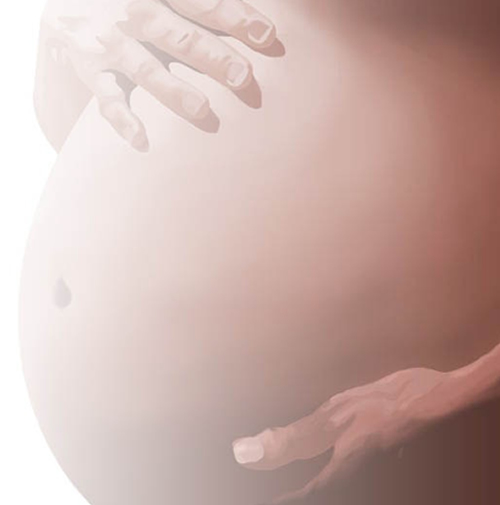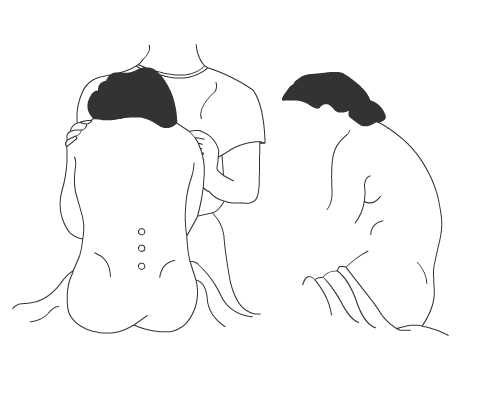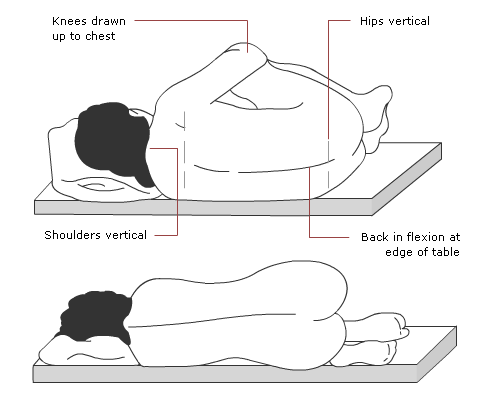Good positioning is essential for successful spinal placement. The mother may find it hard to get into position with an enlarged uterus and pain during contractions. A good position requires a well flexed spine, which overcomes the natural lumbar lordosis and opens up the spaces between the vertebrae - this can be achieved by two basic positions.

Good positioning is essential for successful spinal placement. The mother may find it hard to get into position with an enlarged uterus and pain during contractions. A good position requires a well flexed spine, which overcomes the natural lumbar lordosis and opens up the spaces between the vertebrae - this can be achieved by two basic positions.
-
Sitting (Fig 1):
- The patient sits on the side of the bed
- The bed needs to be flat, level and even to prevent twisting of the spine
- Feet supported by a stool so that knees are higher than hips
- Ask her to hold a pillow in front of her chest, place her chin on her chest and relax her shoulders and slump down into the bed
- Lateral

Good positioning is essential for successful spinal placement. The mother may find it hard to get into position with an enlarged uterus and pain during contractions. A good position requires a well flexed spine, which overcomes the natural lumbar lordosis and opens up the spaces between the vertebrae - this can be achieved by two basic positions.
- Sitting
-
Lateral (Fig 2):
- The mother should lie on her side with her back close and parallel to the side of the bed
- Draw her knees up in front of her abdomen as far as they will go and her chin should rest on her chest
- Place a pillow under her head and another between her knees to keep the spine straight and prevent the pelvis from twisting
